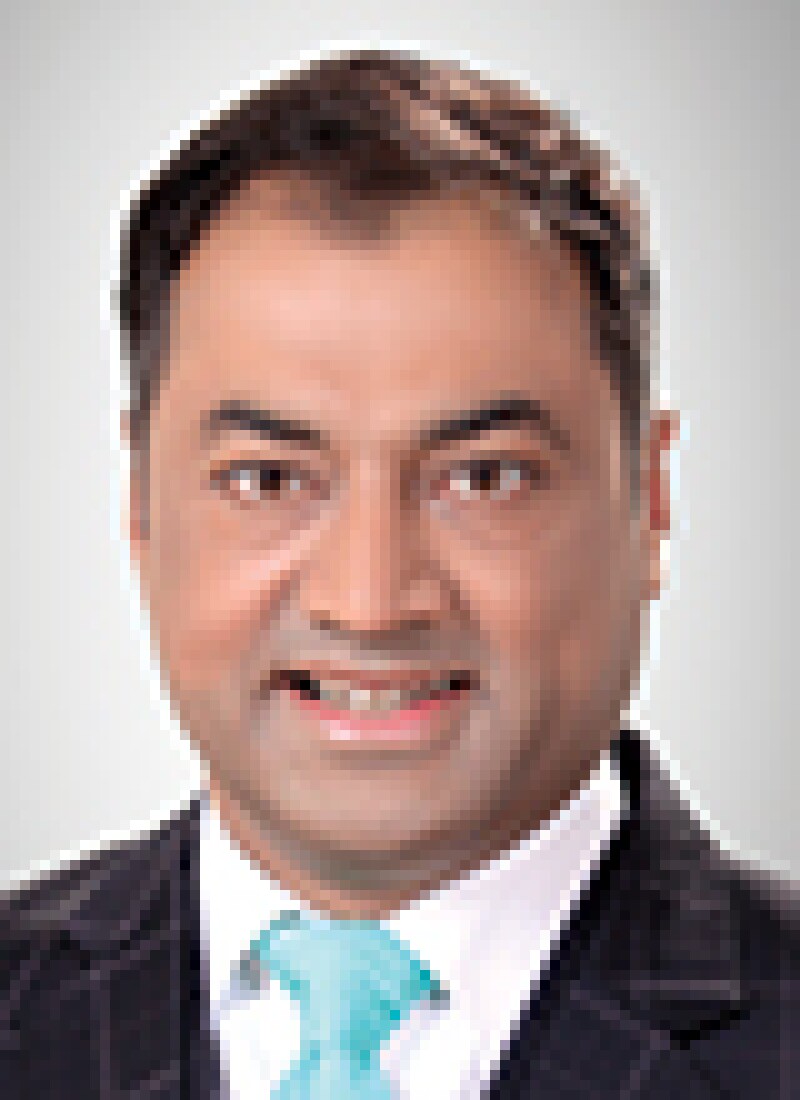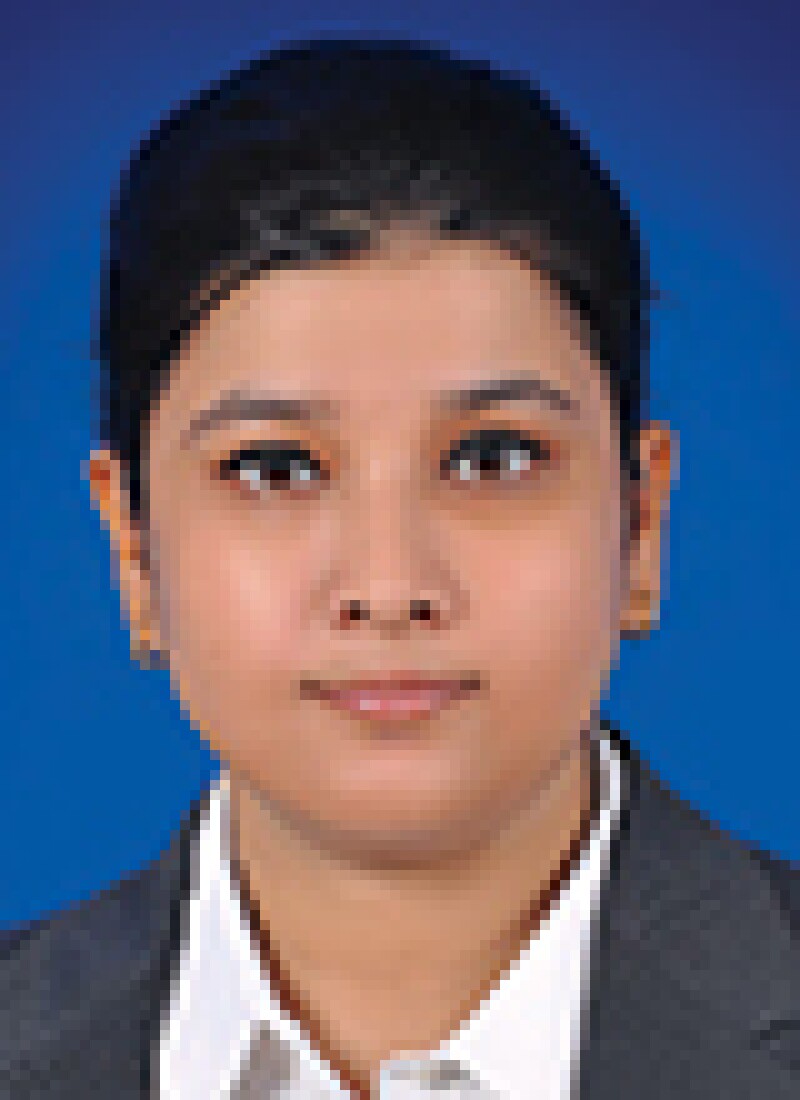The Indian patent regime has come a long way over the past decade. The government of India and the patent office have undertaken a lot of reforms to policies and regulations to foster innovator-friendly regimes. In the past, one of the major concerns of stakeholders was inordinate delay in examination of patent applications, which resulted in huge backlog of pending applications. Clearing these backlogs was indeed a momentous challenge. The four patent offices in India with their varying examination practices troubled and confused foreign applicants and associates to no end. To clear this confusion and to remove the disparity in time for examination in different jurisdictions, the Indian Patent Office took initiatives to streamline the processing of patent applications and to put an end to the practice of forum shopping. One such initiative was auto allocation of patents for examination across all four patent offices, irrespective of the jurisdiction in which the patent was filed. However, as of yet, the most noteworthy initiatives started by the patent office are expediting examination of patent applications and mass recruitment of examiners, which led to a considerable reduction in backlog of patent applications. Using the expedited examination route, many companies including the Hyderabad-based Optimus Pharma Private Limited were granted patents in record time – between 113 and 300 days. Optimus got a process patent for Apixaban, an anti-coagulant, in record time –113 days. Even for applications for which expedited examination is not requested, the patent office issues the first examination report within two years from the date of filing of request for examination. In fact, currently the first examination report is being issued for applications for which request for examination was filed in 2018 and 2019.
Other remarkable measures taken by the Indian Patent Office include inter alia, uniformity and consistency in the examination of applications, bilateral cooperation at the international level including signing of pilot Patent Prosecution Highway (PPH) project with Japan, modernisation of IP offices, digitalisation of the patent system including e-filing of applications, online delivery of examination reports and certificates of grant of patent, use of video-conferencing for hearing of patent applications and SMS alerts to give updates. To enhance convenience for stakeholders, the Indian Patent Office has started the WIPO Digital Access Service (DAS) to facilitate easy, secure, quick and inexpensive procedures for submission of certified copies of priority documents. The Indian Patent Office has also joined the WIPO Centralised Access to Search and Examination (CASE), which enables patent offices to securely share search and examination documentation related to patent applications in order to facilitate work sharing programmes. This development has resulted in fewer objections under Section 8(2), which requires applicants to submit documents related to the processing of foreign applications. The Indian Patent Office has also made efforts to incorporate artificial intelligence, blockchain, IoT and the other latest technologies in patent processing systems. It is safe to say that these initiatives have certainly changed the face of the Indian patent regime.
Recent amendments to the patent rules
The Indian patent rules have undergone significant amendment in recent times. The Patent Amendment (Rules) 2019 came into force on September 17 2019. The main amendment was increased categories of entities eligible for requesting expedited examination. In addition to applicants electing the Indian Patent Office as an international searching authority or an international preliminary examining authority and start-ups, now there are additional entities eligible for requesting expedited examination, such as small entities, female applicants (if all the applicants are natural persons), government departments, government-owned or controlled institutions and government companies.
The amended rules also makes an applicant eligible for expedited examination by virtue of an agreement between the Indian Patent Office and any foreign patent office. This is a major step towards global harmonisation of patent examination. Pursuant to this rule, the Indian Patent Office has initiated a Patent Prosecution Highway (PPH) project with the Japan Patent Office on a pilot basis for a period of three years. The number of requests for the PPH in each office will be respectively limited to 100 cases per year. Under this programme, the Indian Patent Office may receive patent applications only in certain specified technical fields – electrical, electronics, computer science, information technology, physics, civil, mechanical, textiles, automobiles and metallurgy. The Japan Patent Office may receive applications in all fields of technology. Also, even though expedited examination can be requested by applicants under the PPH project, patentability itself is still governed by the provisions of the Indian Patents Act.
The Patent (Amendment) Rules 2019 also require that all the documents are submitted electronically. Original documents are required to be submitted only upon specific request from the patent office within 15 days of such request. The amended rules waive transmittal fee for international applications filed through e-PCT (Patent Cooperation Treaty) and fees for preparation of a certified copy of priority document and e-transmission through WIPO DAS.
Although there is definitely a requirement for further amendments of the patent rules, it is clear that the Patent (Amendment) Rules 2019 are a step in the right direction.
Jurisprudence concerning SEPs
The evolution of jurisprudence of standard essential patents (SEPs) in India cannot be explained without delving into the Ericsson saga. Ericsson has eight SEPs and has sued mobile phone manufacturers like Micromax, Intex, Xiaomi, Lava and Gionee over the alleged infringement of its eight SEPs.
Ericsson and Micromax negotiated for over three years, without any success, to enter into a licence agreement for Ericsson's SEPs which were being used by Micomax's devices. On March 4 2013, Ericsson filed a patent infringement suit against Micromax before the Delhi High Court. In an interim order, Delhi High Court directed Micromax to make interim payments consisting of category-specific royalties. Micromax appealed before a Division Bench of the Delhi High Court. The Division Bench dismissed the appeal on the very same day with liberty to file a fresh appeal if the single judge did not hear Micromax's defence within 30 days. Subsequently, Micromax and Ericsson approached the single judge informing him that they had entered into an interim arrangement pending final disposal of the lawsuit. The matter was then referred for meditation. Micromax also filed a complaint before the Competition Commission of India (CCI) under Section 19(1)(a) of the Competition Act 2002, alleging Ericsson had adopted an abusive and unfair method of setting royalties. Subsequently, the court agreed to a new interim arrangement for the parties wherein Micromax was asked to pay the royalty on different terms. The rates were set based on the combination of technologies present in a product and were set for inflation. They were set as percentages of the net selling price of products. Subsequently, Ericsson entered into a global patent licence agreement with Micromax, which put an end to all pending legal disputes between Ericsson and Micromax.
In 2008, Ericsson brought to the notice of Intex that the devices being imported and sold by Intex were infringing the SEPs of Ericsson and offered to licence its SEPs on fair, reasonable and non-discriminatory (FRAND) licensing terms. The parties entered into negotiations. In the meantime, Intex also instituted proceedings before the CCI for abuse of dominance against Ericsson and filed a revocation petition against Ericsson's SEPs before the Intellectual Property Appellate Board (IPAB). The CCI made a prima facie determination of abuse of a dominant position and ordered an investigation under Section 26 into the complaint by Intex. Subsequently, Ericsson filed a writ petition challenging the CCI's order. Ericsson contended that the orders passed by the CCI were without jurisdiction. The Delhi High Court, however, did not agree with Ericsson and held that in the absence of any irreconcilable conflict between the Competition Act and the Patents Act, the jurisdiction of the CCI to entertain complaints for abuse of dominance in respect of patent rights cannot be ousted.
On April 15 2014, Ericsson filed an infringement suit against Intex at the Delhi High Court for infringement of Ericsson's eight SEPs. Intex admitted before the CCI the essentiality of the patents owned by Ericsson to prove abuse of dominance, whereas before the Delhi High Court, Intex stated that the essentiality of the patents had not been proven. The court dismissed Intex's arguments that Ericsson had yet to establish the essentiality of its patents. The court held that Intex could not argue in front of the CCI that Ericcson's patents were essential and hence it dominated the market, and in front of the court that the patents were not essential. Therefore, the court took the arguments made by Intex before the CCI as an admission on the part of Intex of the essentiality of Ericsson's patents. The court also held that Intex was acting in bad faith, and was trying to avoid paying royalties to Ericsson. The court directed Intex to pay Ericsson 50% of the total royalty amount, as per the total selling price per device, and not chipset.
Ericsson also filed patent infringement suits against Gionee, Lava, Xiaomi and iBall for infringement of Ericsson's eight SEPs. However, none of the SEP litigations initiated by Ericsson has reached the post-trial stage. Micromax and iBall have settled their dispute and entered into a global patent licence agreement with Ericsson. The success of Ericsson against Micromax, Lava, Intex, iBall and Gionee has emphasised the high stakes in SEP litigations and Delhi High Court has emerged as the preferred court for proprietors of SEPs. In fact, recently InterDigital has initiated two suits against Xiaomi before the Delhi High Court for infringement of its SEPs.
The discussion on SEP jurisprudence cannot be concluded, without mention of India's first post-trial SEP judgment, in the matter of Koninklijke Philips Electronics N.V. v Rajesh Bansal And Ors. The Delhi High Court held the defendants to be liable for infringing Philips' essential patent. It was contended by Philips that it is not possible to comply with the given standard without infringing the patents which are essential to that standard. The court concurred with Philips and held that the suit patent is an SEP in respect of a DVD technology player and directed the defendants to pay a royalty and also imposed punitive damages.
The patent holders of SEPs have been given injunctive relief in almost all SEP litigations in India. Conduct of parties is an important consideration for injunctive relief. In the case of Ericsson v Xiaomi, the Delhi High Court upon learning that Ericsson had concealed information about two patents, vacated the interim order in so far as it related to two patents. Even though SEP litigation is at a nascent stage in India, a trend is being set and the rights and liabilities of SEP proprietors are being established.
Rebooting of guidelines for examination of computer-related inventions (CRIs)
Although remarkable improvements have been witnessed in examination practices in almost all fields of technologies, the trailblazing reforms are certainly those initiated in the field of computer-related inventions (CRIs).
Section 3(k) proscribing patentability of computer programs per se, algorithms, business methods and mathematical methods, continues to be one of the most contentious provisions of the Patents Act, not least because of the various guidelines issued by the Indian Patent Office for the interpretation thereof, the latest being the guidelines issued in 2017. The dramatic reversals of the patent office concerning examination practices for CRIs, created a lot of ambiguity and led to application of different standards for examination of patent applications by different examiners.
The Hon'ble Delhi High Court came to the rescue and in back-to-back decisions promulgated a liberal regime for patentability of CRIs, wherein the requirement of novel hardware has been done away with.
The Delhi High Court in the case of Telefonaktiebolaget LM Ericsson (Publ) v Intex Technologies (India) Limited [I.A. No. 6735/2014 in CS(OS) No.1045/2014], judgment pronounced on March 13 2015, held that if an invention has a technical contribution or has a technical effect and is not merely a computer program per se, then it is patentable.
Further, the Delhi High Court in the case of Telefonaktiebolaget LM Ericsson (Publ) v Lava International Ltd [I.A. Nos.5768/2015 & 16011/2015 in CS(OS) No.764/2015], judgment pronounced on June 10 2016, held that inventions which result in technical advancement and have practical implementation or physical representation are patentable.
Furthermore, in another judgment pronounced by the Delhi High Court in the case of Ferid Allani v Union of India & Ors [W.P. (C) 7/2014 & CM APPL. 40736/2019], judgment pronounced on December 12 2019, it was held that computer-related inventions which result in technical effect/technical contribution are patentable.
The Intellectual Property Appellate Board (IPAB) following in the footsteps of the Delhi High Court, in the case of Allani Ferid v Assistant Controller of Patents and Designs [OA/17/2020/PT/DEL], order issued on July 20 2020, held that the mere fact that a computer program is used for effectuating a part of the invention, does not provide a bar to patentability. Thus, the invention must be examined as a whole and the factors to be considered while deciding upon the patentability of such inventions are technical effect achieved by it, and its technical contribution. Going forward, this positive order of the IPAB is going to have an impact on the decision of controllers on the patentability of CRIs. After being non-functional for quite a period of time, the IPAB has been very active amid the COVID-19 pandemic. However, it still has a long road ahead.
The Delhi High Court has set the trend for patentability analysis of CRIs, by time and again emphasising that technical effect and technical contributions are the factors to be considered when determining the patent eligibility of CRIs.
From amending patent rules to make them more convenient for stakeholders to rebooting the CRI guidelines and establishing trends for SEP litigations, the courts and patent office in India have shown that they are pro-innovators. Delhi High Court in particular has magnificently risen to the occasion and has significantly contributed towards fostering an innovator-friendly regime in India.
SEPおよびCRIの新法理論と最近の特許規則改正について- インドにおけるイノベーターフレンドリーな体制の育成
インドの特許制度は、この10年間で大きく発展してきました。インド政府と特許庁は、イノベーターが利用しやすい制度を促進するために、多くの政策と規制の改革に取り組んできました。過去には、関係者の大きな関心事の一つとして、特許出願の審査が大幅に遅れ、その結果、保留中の出願が大量に発生することになりました。こうした未処理の出願を解消することは、特許庁にとって非常に重要な課題でした。言うまでもなく、インドにある4つの特許庁とその審査方法の違いは、外国人の出願人や弁護士の不安や混乱の種でした。こうした混乱を解消し、異なる管轄区域における審査時間の格差をなくすために、インド特許庁は、特許出願の処理を合理化し、法廷地あさりの慣習をなくすための取り組みを行ってきました。その取り組みの1つが、出願地の管轄権に関係なく、特許審査を4つの特許庁のいずれかに自動割当するというものです。 しかし、今のところ、特許庁の取り組みの中で最も注目されるのは、特許出願審査の迅速化と審査官の大量採用であり、これにより未処理の特許出願が大幅に減少しました。迅速審査ルートを利用して、ハイデラバードを拠点とするOptimus Pharma Private Limited社を含む多くの企業が、113日から300日という記録的な期間で特許を取得しました。Optimus社は、抗凝固剤アピキサバンの製法特許を113日という記録的な期間で取得しました。特許庁は、迅速審査を要求しない出願であっても、審査請求日から2年以内に第1次審査報告書を発行しています。実際、現在、2018年および2019年に審査請求があった出願でも、第1次審査報告書が発行されています。
インド特許庁が実施したその他の注目すべき措置には、とりわけ出願審査の統一性と一貫性、日本との試験的な特許審査ハイウェイ(PPH)プロジェクトの締結を含む国際レベルでの二国間協力、知的財産局の近代化、出願の電子化、審査報告書と特許付与証明書のオンライン配信を含む特許システムのデジタル化、特許出願の審理のためのビデオ会議の利用、最新情報を提供するためのSMSアラートなどが含まれます。関係者の利便性を高めるために、インド特許庁はWIPOデジタルアクセスサービス(DAS)を開始し、優先権書類の認証謄本の提出手続きを簡単、安全、迅速、安価に行うことができるようにしました。また、インド特許庁は、特許庁が特許出願に関連する調査・審査書類を安全に共有することを可能にするWIPO CASEにも参加し、ワークシェアリングプログラムを促進しています。この進展により、出願人に外国出願の処理に関連する書類の提出を要求する第8条(2)項に基づく異議申立が減少しました。インド特許庁はまた、人工知能、ブロックチェーン、IoT、その他の最新技術を特許処理システムに導入するための努力も行っています。これらの取り組みは、インド特許制度の様相を大きく変えたと言っても良いでしょう。
最近の特許規則の改正
インド特許規則は近年、大幅な改正が行われています。2019年の特許改正(規則)は、2019年9月17日から施行されており、最も顕著な改正は、迅速審査を請求する対象となるエンティティのカテゴリーが増加したことです。国際調査機関又は国際予備審査機関としてインド特許庁を選択した出願人」及び「新興企業」に加えて、小規模企業、女性出願人(出願人が全員自然人である場合)、政府部門、政府が所有又は管理する機関、政府企業などが迅速審査を請求することができる対象となりました。
改正規則では、インド特許庁と外国特許庁との間の協定により、出願人も迅速審査を受けることができるようになりました。これは特許審査の世界的な調和に向けた大きな一歩です。この規則に基づき、インド特許庁は日本特許庁との間で3年間の試験的な特許審査ハイウェイ(PPH)プロジェクトを開始しました。各特許庁における特許審査ハイウェイ(PPH)の申請件数は、それぞれ年間100件に制限されます。このプログラムにより、インド特許庁は、電気、電子、コンピュータ科学、情報技術、物理、土木、機械、繊維、自動車、冶金の特定技術分野のみを対象とし、日本特許庁は全技術分野を対象とすることができます。また、PPHプロジェクトの下で出願人が迅速審査を要求することができても、特許性自体はインド特許法の規定に従うことになります。
また、2019年特許(補正)規則では、すべての書類を電子的に提出することが義務付けられています。原本書類は、特許庁からの特定の要求があった場合に限り、その要求から15日以内に提出することが求められています。改正規則では、e-PCTを介して出願された国際出願の送信料、優先権書類の認証謄本の作成とWIPO DASを介した電子送信のための手数料が免除されています。
特許規則には更なる改正の必要性が明確にあるが、2019年特許(改正)規則は正しい方向への一歩であることは明らかです。
標準必須特許(SEPs)の法理論
インドにおける標準必須特許(SEPs)の法理論の進化は、エリクソンの物語を掘り下げずに説明することはできません。エリクソンは8つのSEPを有しており、その8つのSEPが侵害されているとして、Micromax社、Intex社、Xiaomi社、Lava社、Gionee社などの携帯電話メーカーを提訴しています。
エリクソンとMicromax社は、Micromax社の端末で使用されていたエリクソンのSEPのライセンス契約を結ぶために3年以上交渉しましたが、成功せずに終わりました。2013年3月4日、エリクソンはMicromax社を相手取り、デリー高等裁判所に特許侵害訴訟を提起しました。デリー高等裁判所は、仮命令として、Micromax社に対し、カテゴリー別のロイヤルティからなる中間納付を行うよう指示しました。Micromax社は、デリー高等裁判所の第二審で控訴しました。同第二審は、第一審の裁判官が30日以内にMicromax社の抗弁を聴取しなかった場合には、再度上訴する自由があるとして、同日に控訴を棄却しました。その後、Micromax社とエリクソンは、第一審裁判官に連絡を取り、訴訟の最終処理までの間、両社が暫定的な合意に達したことを伝えました。その後、この問題は、調停に付託されました。また、Micromax社は、2002年競争法第19条(1)項(a)に基づき、エリクソンが不正で不公正なロイヤリティ設定を行っていたとして、インド競争委員会(CCI)に提訴しました。その後、裁判所は、Micromax社が異なる条件でロイヤリティを支払うよう求める両当事者による新たな暫定的な取り決めに合意しました。ロイヤリティは、製品に含まれる技術の組み合わせに基づいて設定され、インフレを考慮して設定されました。ロイヤリティは製品の純販売価格のパーセンテージで設定されています。その後、エリクソンはMicromax社との間でグローバル特許ライセンス契約を締結し、これにより、エリクソンとMicromax社の間で係争中の法的紛争に終止符が打たれました。
2008年、エリクソンは、Intex社が輸入販売している機器がエリクソンのSEPを侵害していることをIntex社に通知し、エリクソンのSEPをFRANDライセンス条件でライセンスすることを申し出ました。両当事者は交渉に入りました。一方、Intex社は、エリクソンに対する支配権の濫用でCCIに訴訟を提起し、エリクソンのSEPsの失効をIPAB(知的財産審判部)に申請しました。CCIは、優越的地位の濫用について一応の判断を下し、第26条に基づき、Intex社の申し立てに対する調査を命じました。その後、エリクソンは、CCIの命令に異議を唱える書状を提出しました。エリクソンは、CCIが下した命令には管轄権がないと主張しました。しかし、デリー高等裁判所はエリクソンの主張に同意せず、競争法と特許法の間に矛盾がない場合には、特許権に関する支配権の濫用を訴えるCCIの管轄権を排除することはできないとの判断を下しました。
2014年4月15日、エリクソンは、Intex社がエリクソンの8つのSEPを侵害しているとしてデリー高等裁判所に提訴しました。Intex社は、CCIでエリクソンが所有する特許の優位性の濫用を証明するための本質性を認めましたが、デリー高等裁判所では、特許の本質性は証明されていないと述べました。裁判所は、エリクソンが所有する特許の本質性を証明するには至っていないとするIntex社の主張を退けました。裁判所は、Intex社は、エリクソンの特許が本質的であり、それゆえに市場を支配しているとCCIで主張することはできず、また、裁判所では、この特許が本質的ではないと主張することはできないと判断しました。したがって、裁判所は、IntexがCCI社で主張したことを、エリクソンの特許の本質性をIntex社が認めたものと判断しました。また、裁判所は、Intex社は悪意を持って行動しており、エリクソンへのロイヤルティの支払いを避けようとしていたと判断しました。裁判所は、チップセットではなく、デバイスあたりの総販売価格に応じて、ロイヤルティ総額の50%をエリクソンに支払うよう指示しました。
エリクソンはまた、エリクソンの8つのSEPを侵害したとして、Gionee社、Lava社、Xiaomi社、iBall社に対して特許侵害訴訟を提起しました。しかし、エリクソンが開始したSEP訴訟は、いずれも審理後の段階に達したものはありません。Micromax社とiBall社は紛争を示談で解決し、エリクソンとの間でグローバル特許ライセンス契約を締結しました。Micromax社、Lava社、Intex社、iBall社、およびGionee社に対するエリクソンの勝利は、SEP訴訟における利害関係の重要性を強調しており、デリー高等裁判所は、SEP所有者にとって好ましい裁判所として浮上してきました。実際、最近では、InterDigital社はデリー高等裁判所において、Xiaomi社に対して2件の訴訟を提起しています。
Koninklijke Philips Electronics N.V. vs. Rajesh Bansal And Ors におけるインド初の審理後のSEP判決について言及せずして、SEPの法理論の議論を終えることはできません。デリー高裁は、フィリップスの本質的な特許を侵害したとして、被告らに責任があると判断しました。フィリップスは、その基準に不可欠な特許を侵害しない限り、与えられた基準に適合することはできないと主張しており、裁判所はフィリップスの主張に同意しました。裁判所はフィリップスの主張に同意し、本件特許はDVD技術プレーヤに関するSEPであるとし、被告にロイヤリティーの支払いを指示し、懲罰的損害賠償を課しました。
SEPの特許権者は、インドのほとんどすべてのSEP訴訟において差止命令による救済を受けています。当事者の行動は、差止命令救済のための重要な考慮事項となります。 エリクソンとXiaomi社の事例では、デリー高裁は、エリクソンが2つの特許に関する情報を隠していたことを受けて、2つの特許に関する限り、仮命令を取り消しました。インドでは、SEP訴訟はまだ黎明期にあるとはいえ、その流れができつつあり、SEP所有者の権利と責任が確立されつつあります。
コンピュータ関連発明(CRI)の審査ガイドラインの再構築
ほとんどすべての技術分野で審査実務が著しく改善されてきましたが、先駆的な改革は、コンピュータ関連発明(CRI)の分野で開始されたものです。
コンピュータプログラム、アルゴリズム、ビジネス方法、数学的方法の特許性を禁止する第3条(k)は、特許法の中でも最も争点の多い規定の一つであり、インド特許庁がその解釈に関する様々なガイドラインを発行していることもあり、最新のものは2017年に発行されたガイドラインです。CRIの審査実務に関する特許庁の立場が劇的に逆転したことにより、多くの曖昧さが生まれ、異なる審査官による特許出願の審査基準が適用されることになりました。
デリー高裁は、このような状況を救済するために、二度にわたってCRIの特許性に関する自由な制度を公布し、新し いハードウェアの必要性を排除しました。
デリー高裁は、TELEFONAKTIEBOLAGET LM ERICSSON (PUBL) vs INTEX TECHNOLOGIES (INDIA) LIMITED [I.A. No.6735/2014 in CS.No.6735/2014 in CS(OS) No.1045/2014]の事例において、2015年3月13日に宣告された判決が、発明が技術的貢献を有するか、または技術的効果を有し、かつ、単にコンピュータプログラムそのものではない場合には、特許可能であるとした。
さらに、デリー高等裁判所は、TELEFONKTIEBOLAGET LM ERICSSON (PUBL) vs LAVA INTERNATIONAL LTD [I.A.Nos.5768/2015 & 16011/2015 in CS(OS) No.764/2015]の事例において、2016年6月10日に宣告された判決では、技術的進歩をもたらし、実用的な実施態様または物理的表現を有する発明は特許可能であるとしている。
さらに、デリー高等裁判所がFERID ALLANI vs UNION OF INDIA & ORS[W.P.(C) 7/2014 & CM APPL.40736/2019]の事例で宣告した別の判決では、2019年12月12日に公表された判決では、技術的効果/技術的貢献をもたらすコンピュータ関連発明は特許可能であるとされています。
知的財産控訴委員会(IPAB)は、デリー高等裁判所の事例であるALLANI FERID vs. Assistant Controller of Patents and Designs [OA/17/2020/PT/DEL]の判決を受けて、2020年7月20日に出された命令では、コンピュータプログラムが発明の一部の効果を得るために使用されているという単なる事実だけでは、特許性の障害にはならないと判断しました。したがって、発明は全体として検討されなければならず、そのような発明の特許性を決定する際に考慮すべき要素は、発明によって達成された技術的効果とその技術的貢献です。今後、このIPABの肯定的な命令は、CRIの特許性に関するコントローラの決定に影響を与えることになるでしょう。長い間機能していなかったIPABは、新型コロナウイルスの大流行の中で非常に活発に活動してきましたが、まだまだ長い道のりを残しています。
デリー高等裁判所は、CRIの特許性分析の傾向を示し、CRIの特許適格性を判断する際に考慮すべき要素は「技術的効果」と「技術的貢献」であることを何度も強調しています。
インドの裁判所と特許庁は、利害関係者の利便性を高めるための特許規則の改正から、CRIガイドラインの再構築、SEP訴訟の傾向の確立に至るまで、イノベーションを推進する立場にあることを示してきました。 特にデリー高等裁判所は、このような状況を見事に打開し、インドにおけるイノベーターに優しい体制の育成に大きく貢献してきました。

Kanchan Vadehra
Kanchan Vadehra is one of the founders and presently the managing partner at Kan and Krishme. She also heads the electronics, electrical and mechanical department of the firm.
Kanchan Vadehra specialises in intellectual property laws and has more than 25 years of experience in the field and in handling such matters for both domestic and international companies (including Fortune 500 companies) and research institutions. Kanchan has handled the prosecution of more than 10,000 patent applications. She has authored several articles and newsletters on Indian patent law and practice which have been published in leading IP magazines such as MIP. She actively engages with the government and patent office on policy formulations related to IP.
Kanchan Vadehra is a member of APAA (Asian Patent Attorneys Association), INTA (International Trademark Association) and CII (Confederation of Indian Industry). She is a regular attendee at different IP conferences such as APAA council meetings as well as INTA annual meetings.
Kanchan Vadehra氏は、KAN AND KRISHMEの創設者の一人であり、現在はマネージングパートナーを務めています。また、同社の電子・電気・機械部門の責任者でもあります。
知的財産法が専門であるKanchan Vadehra氏は、25年に渡り国内外の企業(フォーチュン500企業を含む)や研究機関の為にこの問題の処理に携わってきました。これまでに10,000件以上の特許出願の実績があります。MIPなどの主要な知的財産権専門誌にインド特許法と実務に関する記事やニュースレターを執筆しています。また、知的財産権に関連した政策立案において、政府や特許庁と積極的に協力しています。
Kanchan Vadehra氏は、アジア弁理士会(APAA)、国際商標協会(INTA)、インド工業連盟(CII)の様々な知的財産会議の会員です。APAA評議会会議やINTA年次会議などの様々な会議に定期的に参加しています。

Sharad Vadehra is one of the founders and presently the managing partner at Kan and Krishme. He also heads the IP litigation department. He joined the profession in 1989, and is amongst the few attorneys in the country with both technical and legal qualifications.
Sharad Vadehra specialises in intellectual property laws, media, entertainment, sweepstake and promotions, marketing, commercial disputes and litigation and has more than 31 years of experience in dealing with domestic and international companies (including Fortune 500 companies) and research institutions. Mr Vadehra has handled the prosecution of more than 30,000 patent and trademark applications. He has spoken on IP law and practice in over 500 institutions and corporate bodies in India and overseas, and is the author of the book Indian Patent Law and Practice published by Chosakai in Japan in Japanese. Please see page number 23 for more details of the book.
Mr Vadehra represented a big Japanese company in NTT Docomo v The Asst. Controller of Patents in Madras High Court which turned out to be a landmark case in Indian IP history. In this matter, a big and old Indian IP firm made a mistake and withdrew an application which was very important for the client. Later, the client approached Sharad Vadehra who filed a writ petition before the High Court. In the High Court, through his arguments, Mr Vadehra was able to reinstate the withdrawn application. It was the very first time in the IP history of India that a withdrawn patent application was reinstated.
Mr Vadehra has often been consulted by the government of India when any new guidelines or rules are being framed with respect to the Indian Patent Act and Rules.
Mr Vadehra was a vice president of APAA – India between 2016 and 2019 and was responsible for organising the APAA General Assembly and Council Meetings which took place in New Delhi in November 2018. He has been re-elected as vice president of APAA – India for the second term for 2020-2022.
Mr Vadehra is a founding member of the FICPI India group and has been very closely associated with it since its formation. He is one of the founding members of GALA (Global Advertising Lawyers Alliance) and was the president of its Asia-Pacific branch. He is registered with the Delhi High Court. He is a member of the following bodies: FICPI, APAA, AIPLA, AIPPI, INTA, LES and CII.
Sharad Vadehra氏は、KAN AND KRISHMEの創設者の一人であり、現在はマネージングパートナーを務めています。また、知的財産訴訟部門の責任者でもあります。1989年に入所した同氏は、技術資格と法的資格の両方を有する国内でも数少ない弁護士の一人です。
Sharad Vadehra氏の専門分野は、知的財産法、メディア、エンターテイメント、懸賞・プロモーション、マーケティング、商事紛争、訴訟であり、国内外の企業(フォーチュン500企業を含む)や研究機関のこれらの問題に31年以上携わってきました。また、30,000件以上の特許・商標出願の実績があります。また、インド国内外の500以上の機関や企業で知財法と実務について講演を行っており、日本では発明推進協会から出版された『インド特許法とそのプラクティス』(日本語版)の著者でもあります。書籍の詳細については、23ページをご覧ください。
Mr Vadehra氏は、インドの知的財産権史に残る画期的な事件となったマドラス高等裁判所で、日本の大企業であるNTTドコモ対特許庁の訴訟の代理人をしました。この事件では,インドの大手老舗知財事務所がミスを犯し,クライアントにとって非常に重要な出願を取り下げてしまいました。その後、クライアントはSharad Vadehra弁護士に連絡を取り、高等裁判所に提訴しました。高等裁判所における優れた主張手腕により、Mr Vadehra氏は、取り下げられた出願を復活させることができました。インドの知的財産権の歴史の中でも、取り下げられた特許出願が復権されたのは初めてのことでした。
Sharad 氏は、特許関連の法律、規則、新たなガイドラインが制定される際には、インド政府からの相談を多く受けています。
Sharad氏は、2016年~2019年にはインドAPAAの副会長を務め、2018年11月にニューデリーのエアロシティで開催されたAPAA総会・評議会の開催を担当しました。2020~2022年の2期目のインドAPAAの副会長にも再選されました。
Sharad氏は、同僚と共に2009年に設立したFICPIインドグループと非常に密接であり、グループ会長・秘書などの重役を担っています。同氏はGALA(グローバル広告弁護士アライアンス)の設立メンバーの一人であり、同会のアジア太平洋地域支部会長を務めました。 彼はデリー高等裁判所に登録されています。また、FICPI(国際知的財産弁護士連盟)、APAA(アジア特許弁護士協会)、AIPLA(アメリカ知的財産法協会)、AIPPI(国際特許協会)、INTA(国際商標協会)、LES(ライセンシング・エグゼクティブ・ソサエティ)、CII(インド産業連盟)の会員でもあります。

Kanu Priya
Kanu Priya is an advocate and registered Indian patent agent. She is a partner at Kan and Krishme and has more than a decade of experience in handling IP matters for both domestic and international companies (including Fortune 500 companies). She helps companies to strategise their IP portfolios and works on landscape analysis and freedom to operate opinions. She handles drafting, prosecution and litigation of patent and trademark applications. She actively engages with the government and Indian Patent Office on policy formulations related to IP.
She advises clients on a wide variety of advertising, media and marketing law matters, including advertising regulations, social media, sweepstakes, promotions and contests.
She is a member of the APAA (Asian Patent Attorneys Association) and INTA (International Trademark Association).
Kanu Priya氏はインドの特許・商標出願エージェントです。Kan and Krishmeのパートナーであり、10年以上に渡り国内外の企業(フォーチュン500企業を含む)の知的財産権問題に携わっています。企業の知的財産権ポートフォリオの戦略立案を支援し、ランドスケープ分析とフリーダムトゥオペレート調査を促進し、特許・商標出願の起草、実務・訴訟も担当しています。また、知的財産権に関する政策立案において、政府や特許庁と積極的に連携しています。
同氏は、広告規制、ソーシャルメディア、懸賞、プロモーション、コンテストなど、広告、メディア、マーケティング法に関連する様々な問題についてクライアントに助言しています。
同氏は、APAA(アジア弁理士協会)、INTA(国際商標協会)の会員です。













